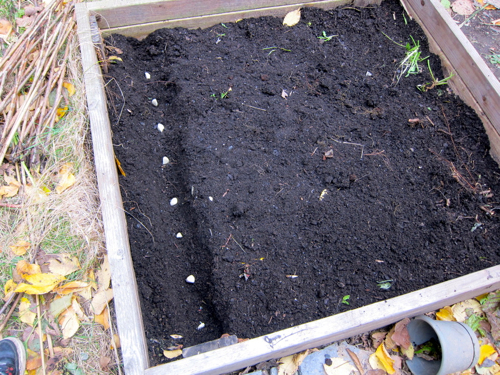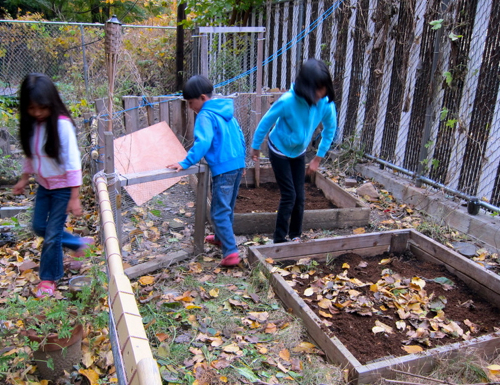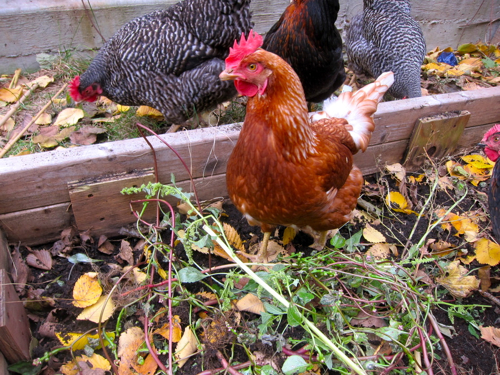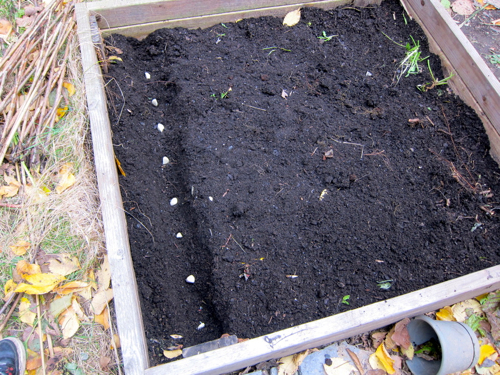 A friend sent Nina an urgent text message that said: “Alert! Today is a good day for planting garlic!” KK Haspel talks to the plants on her farm. She also grows astoundingly delicious vegetables and bonkers-gorgeous flowers. The connection between these facts is not something I can confirm, but I’m happy to believe there is one.
A friend sent Nina an urgent text message that said: “Alert! Today is a good day for planting garlic!” KK Haspel talks to the plants on her farm. She also grows astoundingly delicious vegetables and bonkers-gorgeous flowers. The connection between these facts is not something I can confirm, but I’m happy to believe there is one.
Before she gave me a crash course in her brand of biodynamic farming (on the telephone) from Southold, Long Island, the other day, all I knew was that biodynamic made organic look like amateur hour and had something to do with Rudolph Steiner and the moon. It sounded, as my dad would say, pretty hoogy-moogy. And that was before I learned about dowsing rods, let alone the cow horns or the herb-stuffed buried intestines.
Yet, after hearing KK talk about cosmic forces, moon rhythms, the balance of the earth, and the all-knowing plant life that surrounds us, I wanted to convert immediately. Right off the bat, she told me it has nothing to do with astrology or “fortunes.” But the logic behind biodynamic farming — part scientific and part spiritual — makes sense of nature and is intriguing because it feels far beyond my understanding. The science will have to come next, and I have a long winter of reading ahead of me.
KK started her farm in 1999 when she and her husband went looking for a getaway house. “When we turned up that driveway, everything changed,” KK said of finding the barn where they have lived ever since. The couple soon made it their full-time home, and KK launched herself into a deep education in farming, which started at The Nature Lyceum before she attended the Pfeiffer Center. (Both are schools in her area that focus on biodynamic farming and the work of Rudolph Steiner.)
KK doesn’t trust any soil or fertilizer that comes in a package, even if the package says “natural” or “organic.” Aside from manure from a neighbor’s horses and a few supplemental minerals, KK’s farm is self-sufficient, and dependent on recycled materials to keep the soil balanced.
When she began planting and harvesting based on a biodynamic calendar (mine’s in the mail!) and making biodynamic compost, KK saw a marked difference in the colors and flavors of the food she was producing. Biodynamic compost requires a much more specific formula than what many of us do with our kitchen scraps. (I’m planning to attend a workshop in the spring. In the meantime, check out the reading list on her website.)
 Some kids from the neighborhood helped Nina prepare her garden for winter.Photo: Nina LalliKK says that many people have dead soil, or their compost is too dry or hot, and the minerals get damaged. “Nature knows everything,” she says. “We just don’t.” She says her work with dowsing rods (metal rods which move back and forth and “answer” her questions) is her way of cooperating. For example, she asks her plants “do you need water today?” and waters according to the yes-or-no answer the rods provide. “The plants know the weather. If it’s going to rain the next day, they’ll say no. No one waters like God. Rain brings down all kinds of stuff, like nitrogen and pollen, so for them getting water from a hose is like filling up on McDonald’s right before going to the greatest restaurant in the world.”
Some kids from the neighborhood helped Nina prepare her garden for winter.Photo: Nina LalliKK says that many people have dead soil, or their compost is too dry or hot, and the minerals get damaged. “Nature knows everything,” she says. “We just don’t.” She says her work with dowsing rods (metal rods which move back and forth and “answer” her questions) is her way of cooperating. For example, she asks her plants “do you need water today?” and waters according to the yes-or-no answer the rods provide. “The plants know the weather. If it’s going to rain the next day, they’ll say no. No one waters like God. Rain brings down all kinds of stuff, like nitrogen and pollen, so for them getting water from a hose is like filling up on McDonald’s right before going to the greatest restaurant in the world.”
Sigh. I can’t tell you how many times I effectively filled up my garden with McDonald’s food right before a rainstorm this summer. At this point in the conversation, I was feeling a little sorry for my land, and jealous of KK’s intimate relationship to hers. One thing I do have going for me, thankfully, is poop. Chickens (I have six) are alarmingly prolific manure producers, and once it has broken down in the compost pile, their manure makes fantastic fertilizer.
KK talks about the steep learning curve she had to endure when she started practicing biodynamics, and her determination to teach others what she knows now, literally, in an effort to save the world. My personal garden mentor (and a fake uncle of sorts), Steve, has already learned a lot from her. He sent me an urgent text message recently that read: “Alert! KK says today is a good day for planting garlic!” I got her on the phone for garlic instructions and advice on readying the garden for winter. According to KK, winter is the most active time for the earth’s soil. “It actually takes a big breath in,” she said, and snow is “God’s mulch.”
 The chickens helped too.Photo: Nina LalliKK suggested I let my chickens help clean up the plants that were wilting in my garden beds, a perfect plan that led to by far the greatest day in the life of the flock. I cut back plants that will come back next year, like sage and sorrel, and let the hens peck around at leaves, bugs, and worms. They cooed with joy and roamed the backyard all day.
The chickens helped too.Photo: Nina LalliKK suggested I let my chickens help clean up the plants that were wilting in my garden beds, a perfect plan that led to by far the greatest day in the life of the flock. I cut back plants that will come back next year, like sage and sorrel, and let the hens peck around at leaves, bugs, and worms. They cooed with joy and roamed the backyard all day.
I cleared the garden beds, harvesting the last sage and arugula for myself, and threw the remaining greens into the chicken run. Then it was time for garlic. I made a row in each of the three beds, about 4 inches deep, and loosened up the soil. (Garlic likes sun, so I placed it accordingly.) Then I planted eight cloves in each, sprout ends up, about five or six inches apart, and covered them over. Then, according to KK’s instructions, I distributed the mature compost I had among the beds. She also suggests sprinkling kelp onto the soil.
The kids next door asked to help, and their mother approved, so together, we covered the beds with leaves, as mulch. (Then they dug up worms to feed to the chickens, with equal parts disgust and fascination.) And their mother watched from the window, to make sure I wasn’t a psychopath.
In the midst of all this, I filled a jar with a mixture of samples taken from different parts of the garden. Tei and I didn’t have the soil tested when we cleaned up the backyard; we just dug a few feet into the ground and put in new, store-bought soil, but we didn’t seal the beds from the surrounding dirt. So we’re long overdue to send the sample off and face the diagnosis. My Brooklyn land has seen some serious abuse in its time — if it’ll take some sweet-talking and cow guts to nurse it to health, I’m game.



